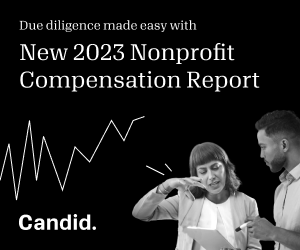Philanthropy is the key to ensuring cities’ climate benefits of the Inflation Reduction Act

When most people envision who is moving the needle on climate action, they see national governments, presidents, heads of state, or international bodies like the United Nations. Cities, however, are doing most of the on-the-ground work to cut carbon pollution and help communities adapt to climate change. Cities house nearly 60 percent of the global population and account for 70 percent of global greenhouse gas emissions—a number that will only grow over the coming decades unless we act decisively. Climate Mayors, C40 Cities (C40), and the Urban Sustainability Directors Network (USDN) know first-hand that to act at the pace and scale required to confront the climate crisis, we must ensure that cities have the funding, tools, support, and partnerships to reduce emissions and build thriving, resilient communities.
While the Bipartisan Infrastructure Law (BIL) and the Inflation Reduction Act (IRA) provide unprecedented levels of funding for climate action, challenges remain for local governments. Of the $369 billion for climate and resilience funding in the IRA, only $37 billion, or 9 percent, will be split between states, counties, cities, and tribes, with the largest portion going to states. And nearly all of the funding for cities is through competitive grants and not the direct and more flexible formula funding that states receive.
These programs put the same demands on cities as they do on states, while providing far less money to already resource-constrained local governments. In addition, cost-share requirements exacerbate this issue for smaller cities and those with fewer resources. While local governments may receive only a small portion of IRA funds, $227 billion will be available as tax credits to businesses and $43 billion for individuals.
This is where the philanthropic community can and must step in. Philanthropy can play a pivotal role in ensuring that cities and the community-based organizations that local leaders work with have access to grantwriters, technical assistance, and pathways to collaborate with local, state, and tribal governments. With this support, Americans will be able to see the tangible benefits of lower energy bills, new job opportunities, and more resilient communities.
Furthermore, cities will play several roles beyond just applying for funding themselves. Mayors and city staff are key to assisting residents, businesses, and community-based organizations in accessing the full benefits of the law, such as tax credits, rebates, and other incentives. Philanthropy can help equip cities with tools to maximize climate and equity benefits and ensure that tax credits and rebates are fully utilized.
But perhaps most critically, cities can support and partner with community-based organizations to ensure that the Biden administration’s clean energy investments reach those who have been historically underserved and overburdened by climate change. Through partnerships with their communities, cities can help to ensure the goals of the Justice40 Initiative—the Biden administration’s commitment that at least 40 percent of the benefits of federal clean energy investments flow to disadvantaged communities—are met. By fostering greater engagement and coordination between private and public sector partners, local governments will be better able to streamline processes so investments and improvements in clean energy technologies can be quickly put into effect.
In September, Climate Mayors, C40, and USDN jointly published a paper, Maximizing the Impact of US Federal Climate Investments: The Unique Role of Cities, which combines years of collective experience working with our member cities to recommend how to equip local governments to fully realize the potential of the BIL and IRA.
Philanthropy is an essential partner for equipping cities as they work to deliver tangible benefits from the historic investment in climate action. In our paper, we recommend three ways that philanthropy can step up their support to cities:
First, the philanthropic community can prioritize local government in grantmaking. This includes funding staff in local governments to lead the implementation of federal funding, helping fulfill cost-share requirements, and funding state agencies to better collaborate with their local governments. It also includes supporting the development of local policies that take advantage of federal funding and creating shared learning opportunities for mayors and staff to discuss what is working in their cities.
Second, the philanthropic community can leverage their convening power to facilitate collaboration. This includes bringing together local and state government officials to co-design and collaborate on the development of policy and regulatory approaches and making funds available for cities to convene local businesses and community partners. Regional or city-state meetings are also needed to facilitate relationship building. Lastly, philanthropy can invest in community-based organizations to ensure they have the resources and capacity to engage with local governments and win federal funding.
Third, the philanthropic community can expand technical assistance available to cities to make it easier and faster for them to design, fund, and implement projects. This should include support for grantwriting and administration, project ideation and planning, and the foundational equity skills required to be good partners to community-based organizations. Technical assistance should be offered at multiple scales and take advantage of existing national and regional efforts and tools.
Due to the unique and critical role cities will play in the implementation of the IRA and BIL, it is paramount for philanthropy, state and federal leaders, and activists to support local governments and fill in the gaps to ensure cities are equipped to meet the moment.
We must act swiftly and efficiently, not just to take advantage of the funding available now, but because the urgency of the climate crisis demands it. “The era of global warming has ended; the era of global boiling has arrived,” said UN secretary-general António Guterres as the hottest July on record was recorded this summer.
When you work with cities, real people facing struggles on the front lines of climate change will feel the relief offered by these federal investments through cleaner air, lower energy costs, and a green economy for all. Empowering cities to address the climate crisis we all face will yield positive results for generations. We invite the philanthropic community to join us and our members to unlock the better future we know is possible.
Kate Wright is executive director of Climate Mayors; Kate Johnson is head of US Federal Affairs at C40 Cities; and Julia Peek is director of communications and mobilization at the Urban Sustainability Directors Network.








We must prepare for climate catastrophes now to save lives later